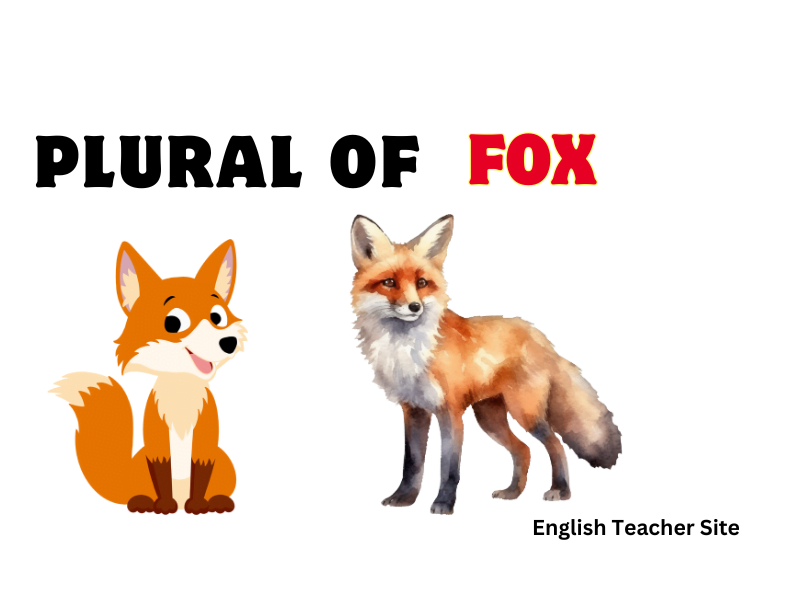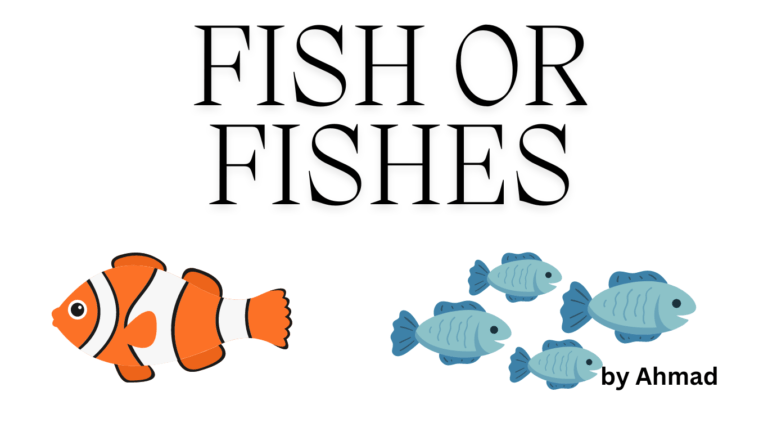What’s the Plural of Fox: Understanding Standard and Irregular Plurals

- The plural form of “fox” is “foxes,” adhering to the common English rule for nouns ending in “x.”
- A single “fox” becomes “foxes” in the plural, which is an example of a regular plural noun in English.
- The term “fox” refers to a distinct type of carnivorous mammal from the dog family.
Moving from the singular form to the plural, the word “fox” follows a standard grammatical rule. Adding an “es” to the end of words that finish with an “x” is the typical approach to forming their plural. Thus, when referring to more than one of these animals, the correct term to use is “foxes.” This rule of thumb is part of a wider pattern in English where regular plural nouns commonly add “-s” or “-es” to their singular forms.
What’s the Plural of Fox?
Singular and Plural Forms
| Singular | Plural |
|---|---|
| fox | foxes |
Rules for Forming Plurals
The formation of plural nouns in English usually conforms to a standard set of rules, which can be summarized as follows:
- Most nouns simply add an -s.
- Nouns ending in -x add -es.
Examples of Plural Usage
- When describing a single animal, one would say, “There is a fox in the meadow.”
- In contrast, if there are multiple animals, one would say, “There are several foxes in the meadow.”
To support learners even more, here is a breakdown of the word “fox” in the context of a sentence:
- Singular: “A fox is known for its cunning nature.”
- Plural: “Foxes are found in many regions around the world.”
Is Fox a Regular or Irregular Plural Noun?
The typical rule for most English nouns ending in x is to add -es to create the plural form. This holds true for the noun fox. Therefore, fox becomes foxes when pluralized.
| Singular | Plural |
|---|---|
| fox | foxes |
This rule is part of a broader grammatical standard where nouns ending in -ch, -s, -sh, -x, or -z receive -es in their plural forms. Here are some examples:
- Bench becomes benches
- Bus becomes buses
- Brush becomes brushes
| Rule Example | Singular | Plural |
|---|---|---|
| -ch | bench | benches |
| -s | bus | buses |
| -sh | brush | brushes |
To further elaborate:
- Nouns ending in -o can follow different rules; some add -s (e.g., photo to photos) while others add -es (e.g., potato to potatoes).
- Whereas the regular noun fox becomes foxes, irregular nouns do not follow predictable rules (e.g., child to children).
Examples of “Foxes” (Plural) in Sentences
In literature and conversations, “foxes” appear in diverse scenarios:
- The foxes scattered as the hounds approached.
- During the winter, the foxes‘ fur becomes thicker and whiter to blend in with the snow.
To illustrate the use of “foxes” in a more structured way, consider the following tables:
| Singular | Plural |
|---|---|
| fox | foxes |
And in terms of subject-verb agreement:
| Subject | Verb |
|---|---|
| The foxes | are |
| A group of foxes | is spotted |
Using “foxes” as the subject requires the verb to match in plurality:
- Foxes often hunt at night.
- In folklore, foxes are frequently depicted as cunning and clever creatures.
In the realm of descriptive language, adjectives modify “foxes” to provide more detail—these can describe color, size, or behavior:
- The bold red foxes are easily spotted in the snow.
- Observing how foxes interact in the wild provides valuable bold ecological insights.
Terms for Male and Female Foxes
Male Foxes:
Often, the male fox is simply called a ‘male fox’. However, in common usage especially in the context of hunting or historical literature, male foxes have sometimes been referred to as ‘dogs’, ‘tods’, or ‘reynards’.
| Common Term | Alternate Terms |
|---|---|
| Male Fox | Dog, Tod, Reynard |
Female Foxes:
Female foxes are commonly referred to as ‘vixens’. This term is widely accepted and used across various contexts, whether it be in wildlife observation, literature, or everyday conversation.
| Common Term | Description |
|---|---|
| Vixen | Female Fox |
It’s important to note that these terms carry no biological or scientific distinction and using ‘male fox’ and ‘female fox’ is equally correct, especially in a scientific context. The use of ‘vixen’ to specifically refer to a female fox can add a layer of precision in certain contexts, such as wildlife documentaries or literature.
Collective Names for Fox
One such term is a leash of foxes, which originates from the use of the word ‘leash’ to describe a restraint for domestic animals. This term implies a sense of control or containment, perhaps reminiscent of the way a group of foxes might maneuver in a coordinated fashion. Another, perhaps more commonly recognized term, is a skulk of foxes. A skulk suggests stealth and cunning, attributes commonly associated with this intelligent woodland creature.
Below are two tables highlighting different collective nouns for foxes and their connotations:
| Collective Noun | Connotation |
|---|---|
| Leash | Control, Containment |
| Skulk | Stealth, Cunning |
Distinctive collective nouns often reflect characteristics attributed to the animals they describe. For instance:
- Earth is used when foxes are in their den.
- Trove, on the other hand, suggests a discovery or hidden collection, which may reflect how a group of foxes can be a rare sight to behold.
In literary or descriptive contexts, these collective nouns add a layer of richness to language:
- A lead of foxes could imply a group with a strong direction or alpha.
- Aerie denotes a high nest and might be used metaphorically for foxes spotted in elevated places.
| Contextual Use | Collective Noun |
|---|---|
| In their den | Earth |
| Sightings | Trove |
Phrases with the Word Fox
Various phrases incorporate the word “fox,” often to describe cunning, slyness, or attractiveness. Here is an assortment of common idioms and sayings that feature this adaptable word.
Common Idioms:
| Idiom | Meaning |
|---|---|
| As sly as a fox | Someone very cunning and able to outwit others. |
| As cunning as a fox | Someone who has a resourceful intellect and cleverness. |
Sayings and Expressions:
- A fox in the henhouse: A situation where an individual is in a position to cause trouble or do harm, similar to a fox being among chickens.
- Silver fox: Typically refers to an older man with gray or white hair who maintains an attractive and charming appearance.
These phrases showcase the fox’s reputation in language as a clever, strategic, and occasionally deceptive animal. They are often used to describe human behaviors that parallel the perceived characteristics of the animal.
Descriptive Phrases:
- Fox trap: A strategy or ploy designed to catch someone unawares, much like a literal trap would aim to catch a fox.
- The Desert Fox: A nickname given to Field Marshal Erwin Rommel, a German general known for his strategic genius during WWII.
Linguistic Roots and Grammar
This section delves into the historical underpinnings and grammatical conventions that govern the transition from singular to plural nouns, particularly focusing on the word “fox”.
Historical Origins
The word “fox” is deeply rooted in the history of the English language, tracing back to Old English. Its etymology can be linked to the Germanic languages, which have contributed significantly to the development of English.
- Old English: The term “fox” was spelled as “fox” in Old English as well.
- German: The German term for fox is “Fuchs,” showcasing a common Germanic linguistic ancestry.
Pluralization Rules
When it comes to translating singular nouns to their plural counterparts, English generally follows certain rules. Here are two primary patterns:
Rule Application
| Singular Noun | Rule Applied | Plural Noun |
|---|---|---|
| fox | Add “-es” | foxes |
Nouns ending in “-x” typically form their plural by adding “-es.” Here, we see a clear example with “fox,” which becomes “foxes.”
Pronunciation Considerations
The pronunciation of the plural form does not diverge distinctly from the singular, maintaining the original’s phonemic structure save for the pluralizing suffix.
- Singular: /fɒks/
- Plural: /fɒksɪz/
Sources
My name is Khamis Maiouf. I am the creator of the English Teacher Site, dedicated to providing valuable resources and insights for students around the world. With a passion for education and a commitment to helping students enhance their skills, I aim to make English teaching more effective and enjoyable for both educators and students.






